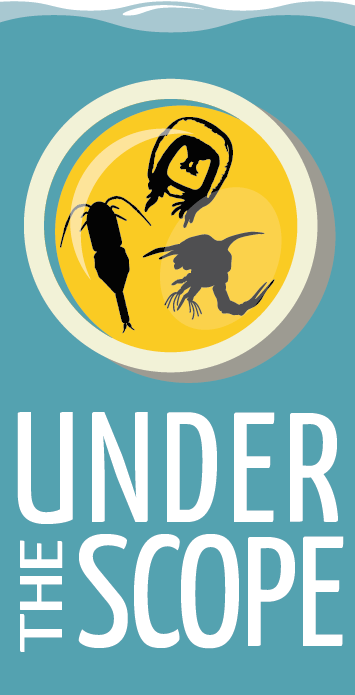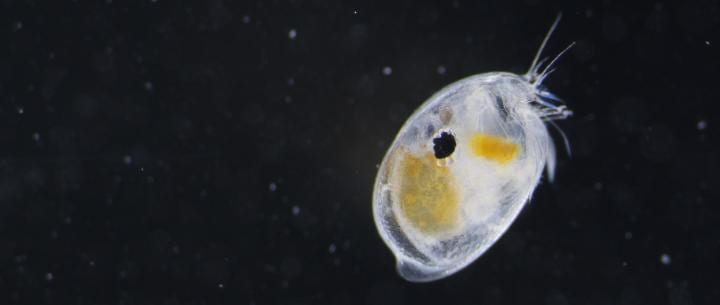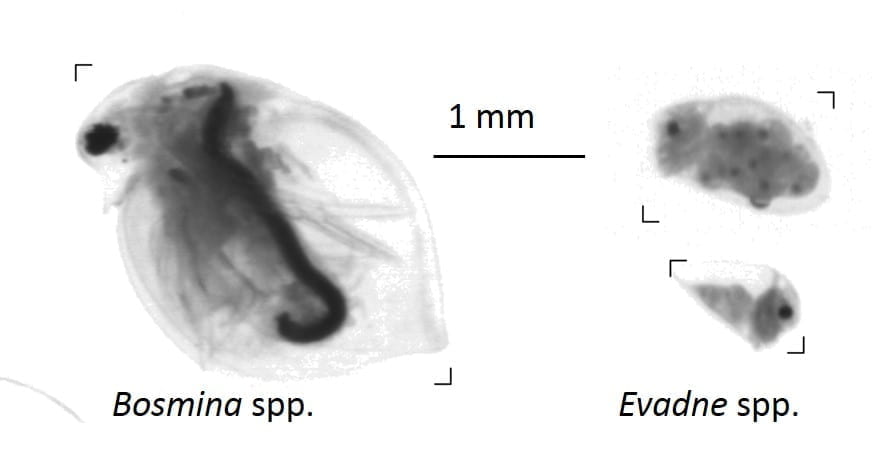Clam-like Zooplankton



Bivalve pediveligers and small clams
Clams, mussels, and oysters (all bivalves) start their lives as planktonic larvae floating in the water. For oysters, this is only time in their life when they can move and find a good spot to settle and grow. Take a look at the pediveligers in the video below, using their velum and foot to move around. Some larvae, like razor clam larvae, look very similar to their adult forms.
Ostracods
These small bivalved crustaceans are common in nearshore plankton samples. They swim with their shells slightly open, using their antennae for propulsion. Some species are bio-luminescent.
Barnacle Cyprids
Barnacles pass through a few larval stages before finally settling on a substrate. The cyprid stage is a specialized, non-feeding form in between their early and adult stages, specifically adapted for selecting the proper settling location. They have smooth, translucent bivalve coverings, sometimes with jointed appendages sticking out. Their seed-like shape usually has an eyespot near the centers of their bodies.
Cladocerans

These animals are related to the freshwater zooplankter Daphnia (water flea), but are generally smaller. Like copopods, they are also holoplankton, spending their entire lives swimming in the water column. Cladocerans feed on phytoplankton, including diatoms and dinoflagellates. Interestingly, they brood their young within their carapace and have no free-swimming larvae.

